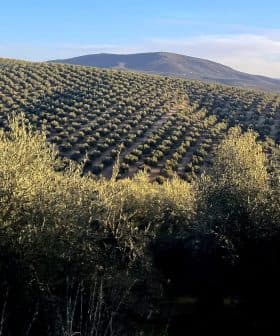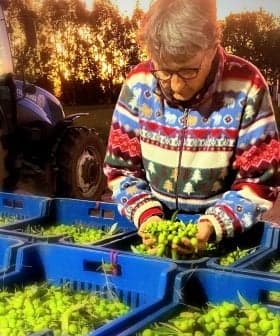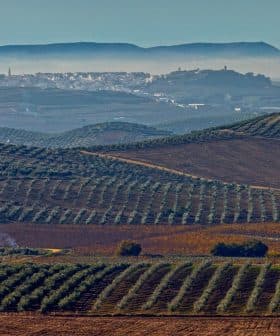Bumper Crop Expected in Syria Amid Ongoing Civil War
Local sources say production may reach 125,000 tons, a significant increase from the previous year. However, the future of olive growing in the country remains uncertain.
 Syrian school girls in refugee camp (Getty Images)
Syrian school girls in refugee camp (Getty Images) The olive harvest is underway in Syria, with local growers hopeful of a strong yield by the end of the season, expecting approximately 125,000 tons of olive oil in the 2022/23 crop year, a 20-percent increase from the previous year. The country’s ongoing civil war has taken a toll on olive growing, with Syria traditionally producing around 176,600 tons of olive oil annually before the conflict escalated in 2013.
The olive harvest is underway in several regions of Syria, and local growers are hopeful of a strong yield by the end of the season.
According to local sources cited by the state news agency Sana, approximately 125,000 tons of olive oils should be expected in the 2022/23 crop year, a 20-percent increase compared with the previous year.
In the last few years, local olive oil production has slightly exceeded 100,000 tons, with the notable exception of the 2018/19 crop year, when the country produced 154,000 tons of olive oil, according to the International Olive Council. In the 2021/22 crop year, Syria produced 105,500 tons of olive oil.
See Also:2022 Harvest UpdatesHowever, the country’s ongoing civil war, which started in 2011 and has since resulted in 610,000 people killed, including 307,000 civilians and up to 13 million internally displaced people and refugees, has taken a profound toll on olive growing.
Along with wheat and cotton, olives are one of the country’s main crops. Prior to the start of the civil war, production and exports of these three crops accounted for 9 percent of the country’s annual GDP.
In the five years leading up to the escalation of the conflict in 2013, Syria produced an average of 176,600 tons of olive oil each year. Data from agricultural researchers in Hungary and Turkey indicate that from 2012 to 2016, Syria lost $795 million worth of value from the olive sector.
Some of these losses resulted from Turkey’s invasion of northwestern Syria, where the former established a buffer zone to house some of the millions of refugees pouring over its border and keep other rival factions in the civil war at arm’s length.
During this time, Turkey was accused of stealing 35,000 tons of olive oil from Syria to export. Turkish officials disputed the claim, arguing that the olive oil from occupied Syrian territory was obtained legitimately.
Currently, most Syrian olive oil exports are destined for other countries in the Middle East and the Caucusus. According to the Observatory of Economic Complexity (OEC), most Syrian olive oil exports are shipped to the United Arab Emirates, followed by Turkey, Kuwait and Armenia.
IOC figures show that Syrian olive oil exports in the last few years sat between 15,000 to 20,000 tons.
Olive trees grow in many parts of Syria, but the most fruitful cultivation happens in the northwestern portions of the country, in the hilly land between the Aleppo and Idlib regions and along the mountains on the Mediterranean coastline, from the Turkish border to Damascus. These parts of the country traditionally receive a larger amount of rainfall during the winter season.
According to the Satoyama Initiative of the United Nations, olive tree cultivation in Syria began around the year 2400 BCE. Many species of wild olive varieties thrive in the country and are highly valued for their genetic diversity.
Share this article









